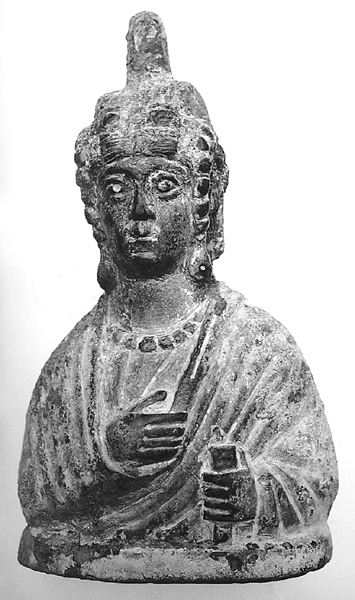The Battle Over Mary
Sidebar to: The Favored One
In 431 A.D., bishops gathered at the Council of Ephesus officially recognized Mary as the Mother of God, in Greek Theotokos, or God-bearer. Subsequently, Christians throughout the empire were prompted to honor Mary with feast days, prayers and art—much of which drew on stories from the Infancy Gospel of James.
But the council might never have been held if it weren’t for a personal vendetta that the emperor’s sister Pulcheria held against the bishop of her hometown, Constantinople.
As emperor, Theodosius II (402–450) considered himself head of the Christian church. But his sister Pulcheria’s zeal for her faith made her a constant presence in ecclesiastical affairs. Pulcheria (who is depicted in the early-fifth-century bust, below) had her portrait hung above the altar in Constantinople’s Great Church; her robe covered the altar during the divine liturgy. She actively sought out relics of saints and presided when they were brought into the city.

As a young woman, Pulcheria took a vow of perpetual virginity and modeled her life after Mary’s. Her daily routine gave the palace the air of a Christian monastery, which indeed was unprecedented for a Roman empress. Pulcheria celebrated Mary as Theotokos and, following earlier traditions of divine selection, she adopted the same title; she called herself the Mother of God.
Already a library member? Log in here.
Institution user? Log in with your IP address.

